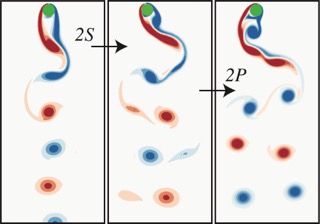Every curious person must have observed air bubbles rising through an aquarium tank of water.
Similarly, we all know that a heavy stone sinks straight in water. The air bubble rises due to its buoyancy, i.e. the fact that it is lighter than water, and the heavy stone falls because it is heavier than water. However, unlike the heavy stone, the air bubble does not rise vertically straight. It zig-zags or spirals during its rising motion in water. This is a well-known fact and is popularly known as “Leonardo’s” paradox, after Leonardo Da Vinci first observed it in the 1600's. Many explanations have been proposed for this paradoxical behavior, but there exists no complete understanding of it.
Now, researchers at the University of Twente and Tsinghua University in Beijing, China have come up with an explanation for the zig-zag of rising particles. They discovered the role of a missing parameter, the particle’s “moment of inertia”, and found that reducing the moment of inertia is ultimately responsible for the development of the zig-zagging/spiraling motions. The researchers say that “the moment of inertia was completely ignored in the past, which explains the confusion and lack of understanding of the zigzag and spiraling of buoyant particles.”

From zig-zagging bubbles to sport balls
The results have strong bearing on our understanding of everyday observations. For example: zig-zag paths of air bubbles rising in an aquarium tank. Further, the insights from this study could also be extended to sports physics. For instance, the rotational inertia of sport balls need to be monitored in the future to better predict sport-ball motions. The famous banana free kick of Roberto Carlos, the movement of Knuckle balls in baseball sport, and the top-spin response of a tennis ball are examples.
Impact
Beyond the curiosity-driven part, the result will also be useful to a variety of physics and engineering communities. In chemical engineering, the mixing induced by zig-zagging particles is very important. The finding offers an opportunity to 3D print low rotational inertia particles, which can be released in multiphase reactor flows to hugely improve the mixing and heat transport in chemical engineering processes.
The scientific article was published in the August 4 issue of the Physical Review Letters journal.





